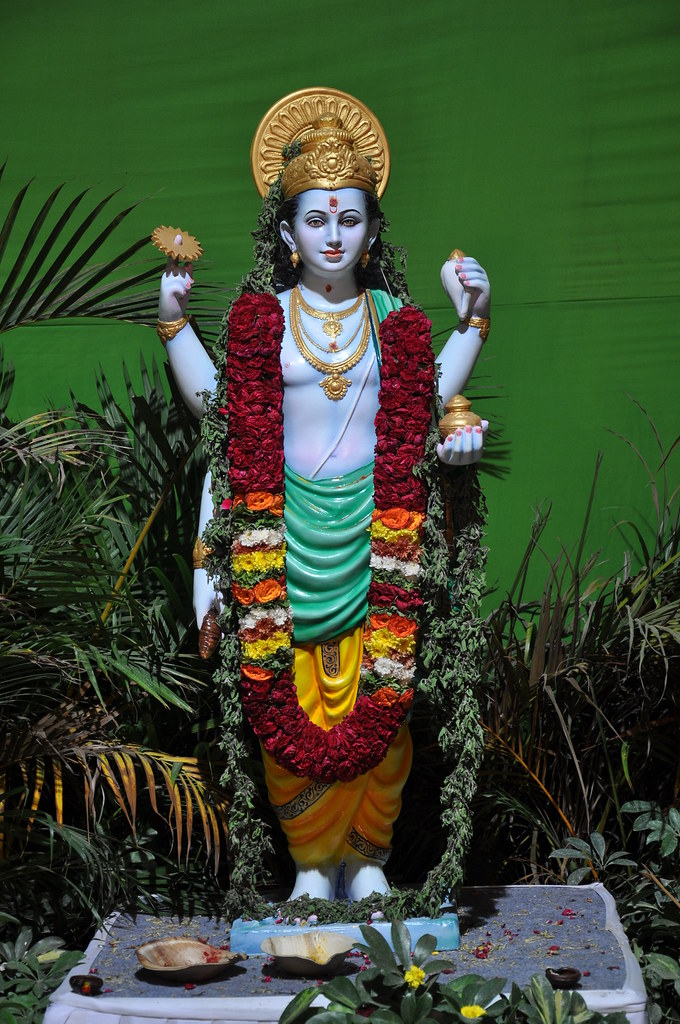Ayurveda - the traditional healing art of India

Five thousand years before our time, scientists, doctors and natural healers of India founded a unique science of healthy living – Ayurveda (Ayur = life, Veda = science). This system of medicine has been passed down through generations and has been constantly expanded.
Ayurveda is not only the science of life, but also a therapeutic and medical doctrine. Ayurveda is an internationally recognized medical system and is taught in India at state universities according to strict ethical and legal guidelines. The course of study is completed after five years with the title B.A.M.S. (Bachelor of Ayurvedic Medicine and Surgery). This is followed by another three years of training, which is completed with the title MD AY (Medical Doctor of Ayurveda).
When a person falls ill, it is not only a certain part of the organism that suffers, but health and the body as a whole are affected. Health and disease are therefore always to be seen holistically, concerning the whole person.
The holistic natural healing methods of Ayurveda open up new dimensions of treatment, which is not limited to the disappearance of symptoms, but opens up new ways of healing and recovery
The basic principles of Ayurveda
Man as the image of the cosmos – the microcosm as part of the macrocosm.
The basic principle of the Ayurvedic worldview assumes that all living organisms, plants, animals and humans, are composed of the basic five elements of the universe: Fire, Earth, Water, Air and Ether. However, these elements are not meant to be understood as those physiological components found in nature. Rather, these terms describe as basic principles overarching all physiological processes and structures in the human organism.
From these five basic elements, three physiological principles or constitutional types are derived – the three doshas – by which all bodily functions can be described.
The heat or fire principle – Pitta – is derived from fire. Its properties are warm, heating and fiery. Pitta is responsible for digestion and metabolism.
The earth and water elements form the phlegmatic principle – kapha. It behaves cool, heavy, oily and stable. Kapha is responsible for the strength, resistance and structure of the body.
The elements air and ether form the active or windy element – Vata. Vata is responsible for all movement of the limbs as well as the internal organs and controls the sense organs and the mind.
The constitutional types in Ayurveda
All three elements or principles – the doshas Pitta, Kapha and Vata – are important for the maintenance of life.
A person’s constitution is individual and is determined at birth. This constitution is closely related to the character and physiological conditions of the individual. One, two or all three principles may be prominent in a person. However, all three principles always play a role in the functioning of the organism.
This theory was developed thousands of years ago in Ayurveda and has been confirmed in modern times by the development of the gene theory. The accurate analysis of the doshas, i.e. the basic constitution of the patient, is of utmost importance and has immense practical benefits in the maintenance and restoration of health and well-being. The patient also gains insight into his constitution and thus into the functioning of his body and mind and how the corresponding way of life should ideally look. For the physician and therapist, it provides decisive indications as to what the forms of therapy and treatment approaches may look like. Thus, the therapies are individually adapted and thus the greatest possible healing success is ensured.
Diseases and their causes from the point of view of Ayurveda
To maintain health and well-being, it is necessary to keep the three doshas in balance. This balance is made possible by living a life in harmony with the laws of nature. Wrong behavior and wrong nutrition disturb the harmonic balance and consequently lead to diseases.
Through a suitable lifestyle and diet, man should bring his doshas into harmony and thus keep the organism healthy and vital. Overactive doshas cause diseases. Most of the time, the body can compensate for the excessive lifestyle of the person, but if the lifestyle is not adjusted in the long run, diseases arise as a consequence. The consequences of an unhealthy lifestyle can include circulatory problems, nervous disorders, and joint wear and tear.
Furthermore, the immune system is weakened and harmful substances are deposited in the tissue. This creates an ideal breeding ground for pathogens. As a result, the harmony and balance in the organism are further disturbed and the degenerative disease processes increase and become chronic.
Similar to Traditional Chinese Medicine, which is based on the principle of Yin and Yang, Ayurveda describes the cause of diseases as an imbalance of the forces that control the body and keep it healthy.
The system of Ayurveda knows about the different constitutional types, and can therefore explain why some people have certain diseases and ailments, while others are immune to these diseases, even though they live in the same environment and conditions.
The primary goal of Ayurveda is to accurately diagnose the constitutional and metabolic diseases and explain how they can be cured or improved through an individualized diet and healthy lifestyle.

Ayurveda Teaching and Research

Kerala is a world-renowned hotspot of Ayurveda teaching and research. In many clinics and hospitals patients from all over the world are successfully treated according to the principles of Ayurveda and receive personal care. Due to the tropical monsoon climate, the Arabian Sea in the west, mountainous terrain in the east and rich tropical vegetation, countless medicinally valuable plants thrive here, which can be used to produce potent medicines and remedies. This diversity of herbs and plants, through intensive and constant research on the part of Ayurvedic doctors, continues to produce new remedies that can be used to treat a wide variety of ailments and diseases. Under the rule of the United Kingdom of England, Ayurvedic medicine was suppressed and banned. Today, however, there are again many doctors and therapists throughout India and Ayurveda is taught at various state universities and used extremely successfully in hospitals and clinics. A very special feature in Indian medicine is the fact that the medicines and oils used in the treatments are always individually tailored and usually prepared by the attending physician personally. Thus, a very personal and individually perfect treatment is made possible. Many ailments that are classified as chronic and incurable in other medical teachings can be successfully treated by means of Ayurvedic treatments and therapies. The prerequisite for a long-term therapeutic success, however, is always the willingness of the patient to engage in the offered forms of treatment and subsequently to maintain a lifestyle that corresponds to the constitution. Many diseases can be prevented simply by appropriate nutrition and a lifestyle that conforms to the laws of nature, and people can retain their vitality and zest for life into old age and thus enjoy life to the fullest.
